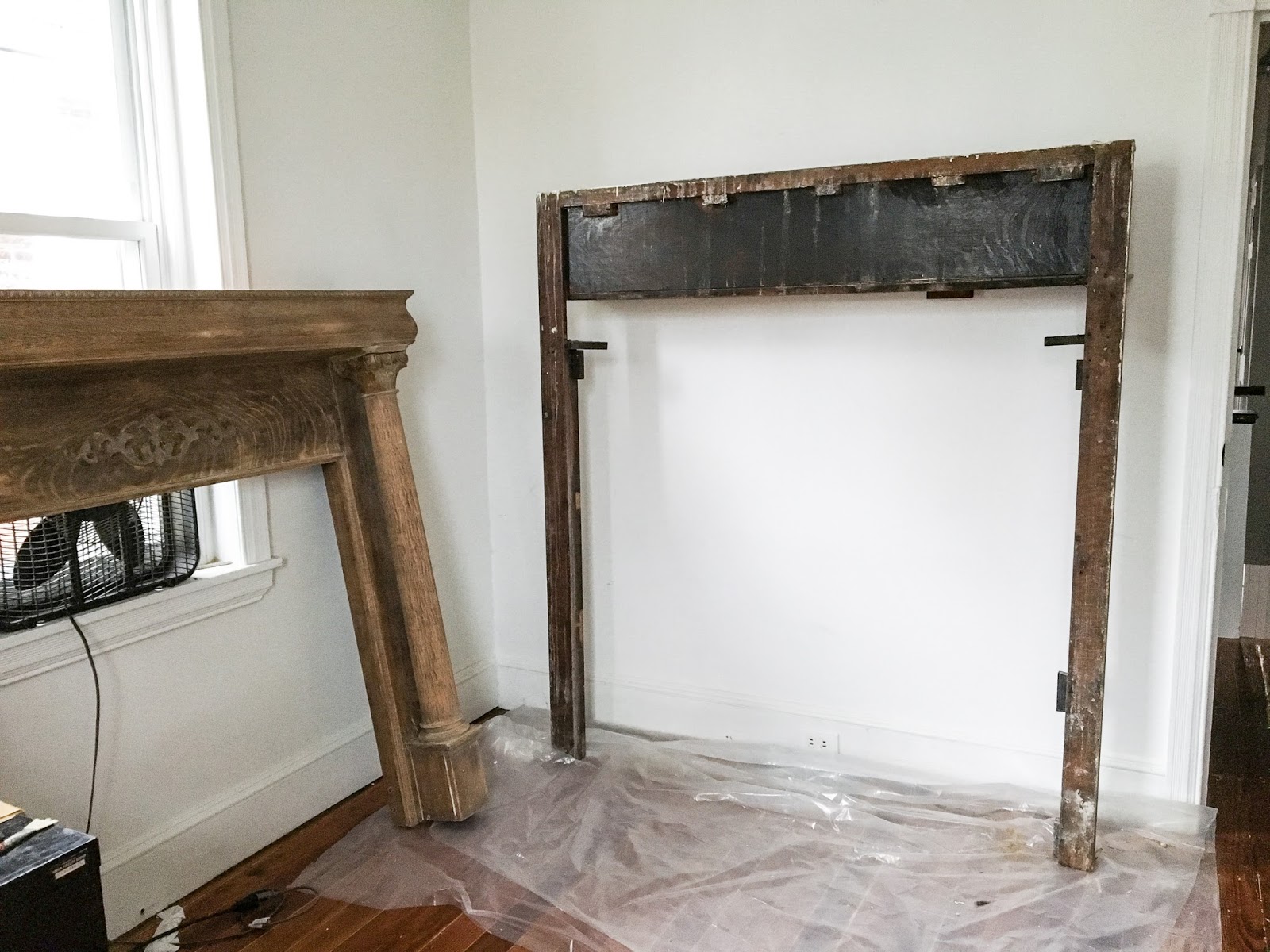
A few months ago I was walking through a rowhome in West Philadelphia that was about to be gutted and rehabbed. A large faux mantel in the corner of the living room caught my eye. I asked the builder if he would be keeping the mantel and he replied that they’d be ripping it out with the rest of the walls, but that I could have it if I wanted it.
I showed up the next day in our pickup truck and brought it back home, not really sure what to do with it, but positive that I couldn’t let it get thrown out. And so began a project that took up the better part of three months.

- Protective Gloves
- Protective Eyewear
- Respirator
- Box Fan
- Paint Stripper
- Paintbrush for Stripper
- Paint Scraper
- X-Acto or Utility Knife
- Sandpaper
- Wood Putty
- Wood Stain or Paint
How to Restore a Historic Wood Mantel
After we brought the mantel inside and upstairs I immediately wondered if I’d bitten off more than I could chew. The mantel looked much bigger in our little rowhome than it did in its previous home, and was caked in layers and layers of white and yellow paint – so built up that you could barely see the details on the columns and trim.
- Apply paint stripper and let set
- Scrape off paint
- Repeat as needed
It took me many, many layers of paint stripper to get down to the actual wood. The amount of paint stripper you’ll need to use depends on how many layers of paint and what type of paint you’re dealing with.

Working only on nights and weekends, it took months for me to finally strip all of the paint off to reveal the wood veneer beneath. I also decided to pull off the top shelf of the mantel so that it didn’t look so oversized in the room (I’m saving that piece for another project) and we cut into the baseboards to truly create a built-in mantel.


- Use wood putty to patch any holes or flaws
- Sand the wood
Start with a coarse grit (like 60) and work your way up to a fine grit (like 220).
- Stain or paint the mantel
Unfortunately for me, the wood had a lot of flaws – too many to simply stain the wood – so I decided to patch all of the holes and paint the mantel with a fresh coat of paint to match the baseboards and trim.





Wow, weren't you frustrated to have done all that work for nothing? If you could have a do over (but not change the condition of the mantel), what would you have done with that wall?
It was always a consideration that I might have to repaint it after sanding it down – but there were so many layers of paint built up that some of of the detailed trim wasn't even visible! Even after hours of cleaning, it needed to be refinished in order to be put in a bedroom – just painting another layer of paint over it wasn't an option.
If I'd known about all of the dings I probably wouldn't have sanded it as well as I did, but I still would have done 90% of the work anyway in order to get most of the paint off.